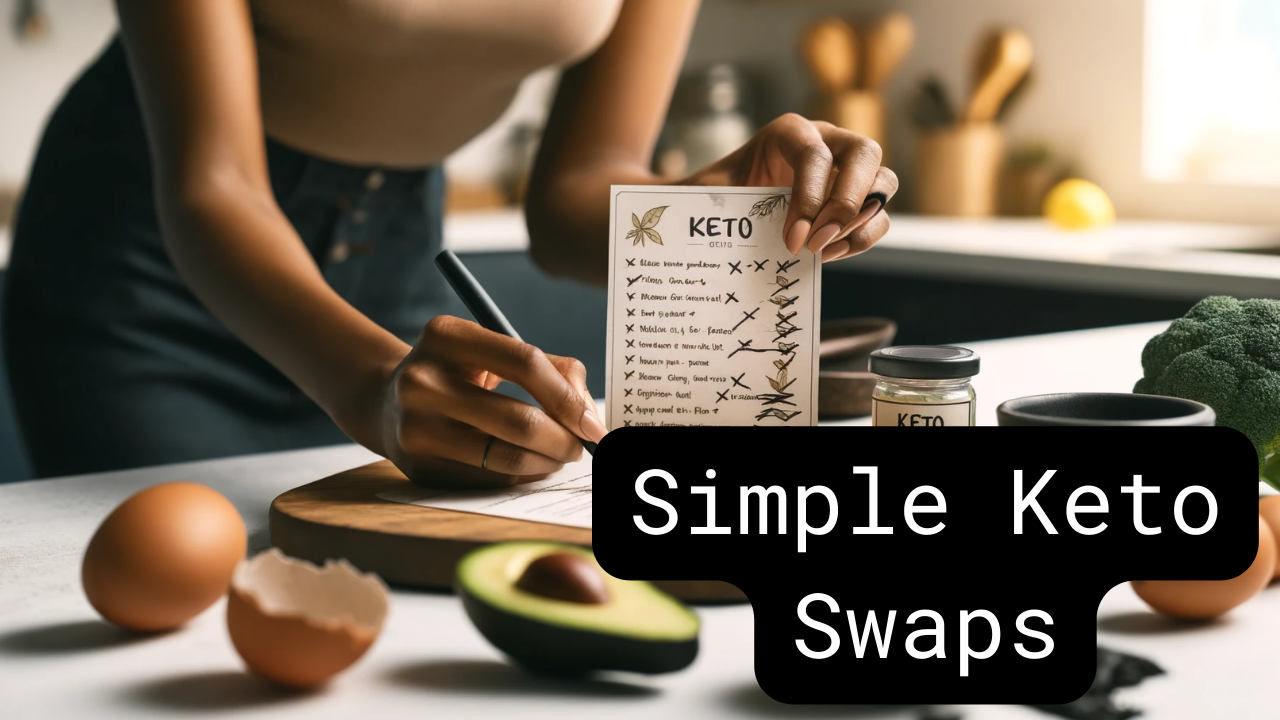10 Proven Ways to Make Any Recipe Keto-Friendly Without the Gimmicks
Switching to keto doesn’t mean giving up the meals you love. It just means adjusting them in a way that aligns with your health goals. The problem is a lot of keto advice focuses on gimmicks and artificial substitutes that don’t actually taste good. I don’t use sweeteners or alternative flours and I don’t try to convince myself that zucchini noodles are real pasta. What I do is focus on real food that naturally fits within keto guidelines. If you’re looking for an honest approach to adjusting recipes for keto without all the tricks, here are ten ways to do it.
This post may contain affiliate links, which means I earn a small commission if you make a purchase through these links. There is no additional cost to you.
1. Focus on the Purpose of the Recipe
Before making any changes, break down the core components of the dish. Ask yourself what makes it taste good. Is it the seasoning? The texture? The richness? The key to successfully making a recipe keto-friendly is preserving the flavors and overall experience, not just swapping ingredients.
For example, if you love a particular pasta dish, the real star of the recipe might be the sauce. Instead of trying to force a noodle substitute, focus on making an incredible keto-friendly sauce and pair it with a meal that makes sense, like roasted vegetables or a protein.
2. Skip the Fake Noodles and Embrace Real Vegetables
I have tried to substitute noodles before. One time I used squash noodles in spaghetti and my whole family agreed it was inedible. That was the last time I tried to trick myself into thinking vegetables taste like pasta. Instead of trying to mimic the texture of noodles, I just make sure my meals are satisfying with plenty of nutrient-dense vegetables that complement the dish.
A hearty stir-fry loaded with vegetables or a flavorful protein with a side of well-seasoned vegetables gives the same satisfaction without the disappointment of soggy vegetable noodles.
3. Know When a Substitute is Actually Worth It
There was one time I had jackfruit fajitas and I truly didn’t realize it wasn’t meat. It was that convincing. But that’s the exception, not the rule. Most substitutions do not taste like the real thing and trying to force them into a dish usually ruins it.
If a keto substitute genuinely works, use it. If not, don’t try to force it. Let the food be what it is instead of chasing an imitation that doesn’t deliver.
4. Ditch Sugars and Sweeteners Entirely (But Be Honest About It)
A lot of keto advice revolves around replacing sugar with sweeteners, but I don’t do that. Sweeteners trigger sugar cravings for me and I don’t want to constantly battle the urge for something sweet. Instead of finding ways to replace sugar, I just don’t eat it. Over time, my taste buds have adjusted and I don’t even want sweet things anymore.
That being said, I do sometimes use condiments in my recipes that have 1 to 2 grams of sugar per serving. That’s the lowest sugar content I can find for certain flavors I want in my dishes. This is my personal choice, and I still feel that I live a relatively sugar-free life, so I am fine with it.
5. Forget About Alternative Flours
A lot of keto recipes rely on almond flour or coconut flour. I don’t use them because they trigger migraines for me. If you tolerate them, that’s great, but if not, there are other ways to enjoy keto meals without needing baked goods.
Instead of looking for replacements for things like bread or baked treats, I focus on whole foods. This keeps my meals simple and eliminates unnecessary ingredients that don’t really add much nutritional value.
Subscribe to my newsletter for more honest keto advice and real food inspiration.
6. Eat a Lot of Vegetables
A lot of people think keto is just about meat and fat, but vegetables are a huge part of my diet. Right now, my two favorites are Brussels sprouts and cabbage.
Cabbage is versatile because it can be eaten raw or cooked. Brussels sprouts are great roasted in the oven with some red pepper flakes sprinkled on before cooking. Instead of trying to replace carbs with keto-friendly versions of bread or pasta, I just eat more vegetables. They provide volume and variety while keeping meals satisfying.
7. Season Everything Well
I am huge on seasoning my food. It has taken some time, but I am building up my spice cabinet. Spices, fresh herbs, garlic, and onions add depth and richness to my meals. The right seasoning can take a simple dish and make it feel special.
8. Use Healthy Fats
I cook with olive oil, avocado oil, and coconut oil to enhance my meals while making sure they are filling.
Fat should be used purposefully. Drizzle it over roasted vegetables, mix it into dressings, or cook proteins in it for extra flavor.
9. Read Labels Carefully
Just because something says keto on the package doesn’t mean it’s actually good for you. There are so many hidden sugars and unnecessary additives in packaged foods.
Look at the ingredients list, not just the net carb count. If a product has a bunch of things you can’t pronounce, it’s probably not something you need to be eating.
10. Adjust Cooking Methods for Better Flavor
How you cook your food matters. Roasting brings out natural sweetness in vegetables. Grilling adds depth to meats. Slow cooking makes tough cuts tender without needing starches to thicken the sauce.
Instead of trying to make keto-friendly versions of traditional foods, focus on using good ingredients and cooking them in a way that brings out their best qualities.
Watch the YouTube video that goes along with this post to see these tips in action.
Final Thoughts
Making recipes keto-friendly doesn’t have to mean using a bunch of artificial substitutes. It’s about focusing on real food, cooking it well, and making choices that actually taste good.
If you want more real keto advice and exclusive content, consider becoming a member.



